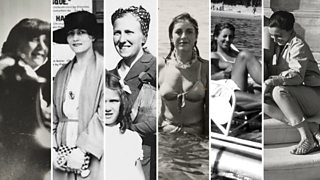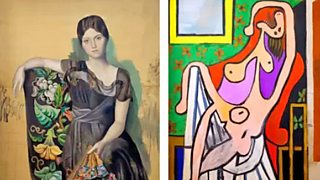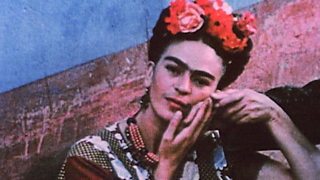A life of song: How Sam Henry saved the people's music
18 April 2019
In the great folk music revival, the song collector was a key figure – someone who saved beautiful, traditional songs for all. One notable example was Northern Irish folk legend Sam Henry. As a new, two-part documentary celebrates the indefatigable collector, IAN McTEAR recalls his influence.

The folk revival of the early 1960s not only renewed interest in traditional music across the world - it also created a huge and pressing demand for authentic songs.
At the forefront of this was a dramatic upturn in interest in ballads, which made stars of groups like The Clancy Brothers.
The seal was put on this when Bob Dylan hooked up with The Clancy Brothers in Greenwich Village folk clubs in the early 1960s – and together they took traditional music to new heights of popularity on the international stage.
Authenticity was a key requirement for the new generation of singers on the lookout for new songs – and even better was an authentic song no one else had.
Some of the more shrewd young balladeers turned to museums and other archives to find songs no one else knew. As a result the work of one man from Northern Ireland a generation earlier, ended up playing an unexpected role.
Bob Dylan on Liam Clancy of The Clancy Brothers
Warning: Third party content may contain adverts.
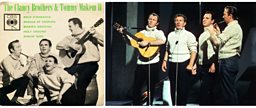
I had decided that there were many things over on the other side of the ocean that I needed to know aboutAlan Lomax
Sam Henry’s contribution was deemed so significant that Alan Lomax – perhaps the most famous folklorist of them all – said Henry’s collection was amongst the best he ever encountered.
Lomax was well-placed to know, as he spent more than 50 years recording music around the world and was the first to record Leadbelly, Muddy Waters and Woody Guthrie. Commenting on Henry’s work, which he came across in his role as head of folksong at the American Library of Congress, Lomax said:
“I had been a very provincial kind of American nationalist, my job had been to glorify American sounds, but here was something that was far more delicate, far more ornamental, far more expressive than anything I had heard in my life.
“I had decided that there were many things over on the other side of the ocean that I needed to know about.”
There is now another surge of interest in Henry’s work in the folk community – including younger performers such as Damien O’Kane, Pauline Scanlon and Hannah Rarity – who find resonance in his work.
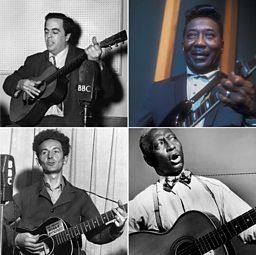

There's everything from feeding chickens, to lovers parting and people heading off to war... it's all therePauline Scanlon
Irish singer and songwriter Pauline Scanlon, who has worked with Sinead O’Connor and Damien Dempsey, said: “The Sam Henry book is very extensive, I like the way his songs are a reflection of the human condition, the stuff that people go through in their lives, for good and for bad, for big and small.
“And there’s everything from feeding chickens, to lovers parting and people heading off to war… it’s all there.”
Folk musician Sean Corcoran, who also collects songs, remembers the thrill of discovering the Henry collection and his futile effort to keep it secret.
“We were constantly hunting for new stuff. I discovered the National Library of Ireland ballad sheet collection, I came across this extraordinary Sam Henry collection, pieces of newspaper pasted into a large tome. I could not believe how rich it was in songs and bingo! This was like a goldmine for me.
“I wanted to keep it totally secret from my competing singers, so I managed to do this for some weeks. One day I was there in the National Library and a voice behind me says ‘Oh ho Sean, what’s this?’ and it was Andy Irvine creeping up behind me and he spotted it…”
Irvine, who was a member of influential folk band Planxty, was not slow to realise the value of what they had found: “I spent months in there, because it was a treasure trove really, absolutely wonderful.”
Among the songs to emerge from the Henry collection were the Maid of Culmore, which is sung by Cara Dillon. Paul Brady and Andy Irvine featured the Lakes of Ponchartrain and Planxty chose the Bonnie Light Horseman.
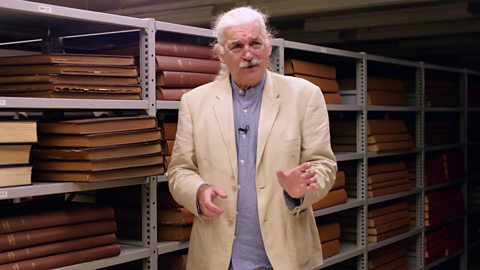
'A wonderful collection of eight hundred songs'
Sean Corcoran explores Sam's song collection.

The Maid of Culmore performed by Cara Dillon
Warning: Third party content may contain adverts.
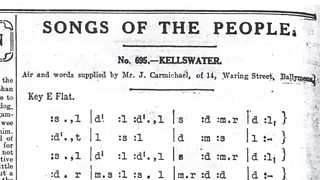
Sam Henry was active in Ulster in the 1920s and 1930s, when he published the songs he found in a weekly column, Songs of the People, in a local newspaper.
Henry decided the best way to find them was to follow in the footsteps of Robbie Burns and become a customs and excise man.
Burns used to take a fiddle with him when he went out on official duties to break the ice, so Henry decided to do the same thing.
He also had to assess people for pensions and so often visited the more elderly members of the community.
He’d play them a tune on his fiddle or a tin whistle and then ask them if they had any songs they could give him.
On one occasion Henry got a kettle for a woman who could not afford one and in return she gave him ten songs.
Composer Neil Martin, who has worked with The Dubliners, The Chieftains and Christy Moore, said Henry’s connection with ordinary people was the crucial element of his work.
“We see in the poetry of Robbie Burns his extraordinary understanding, his ability to make very accessible his words to people and I think that vein was in Sam Henry as well, that he appreciated the importance and the no frills of the ordinary person’s song.”
Although Henry mostly worked in a 20 mile radius around Coleraine, he collected more than 800 songs.
Critics have noted that Henry’s collection is particularly interesting, as it reflects how the Ulster song tradition was a blend of the English, Irish and Ulster-Scots traditions and because he collected from all sides of the community.

Sam Henry and the fiddle
Contributor Brian Mullen talks about Sam Henry's talents as a musician.
Hannah Rarity, ±«Óãtv Radio Scotland Traditional Musician of the Year 2018, said: “When you look at the language, there are little sprinklings of Scots in it, so the influence is pretty apparent.
“There were lots of titles that were either songs that I know, that also have Scottish versions, or have similar links and the same sort of story running through them.”
As well as compiling his folk collection, Henry was also a prolific letter writer, whose correspondents included WB Yeats and Compton Mackenzie.
However he found little recognition in his lifetime and by the time of his death in 1952 his collection had not been published.
Copies sent to libraries in Dublin and Belfast eventually ignited interest in his work.

The Auld Man and the Churnstaff
Hannah Rarity sings the traditional song collected by Sam Henry.
His influence can be found in Andy Irvine and Paul Brady’s duet album released in 1976 and on Planxty’s album After the Break.
A Sam Henry collection called Songs of the People, published in 1990, also brought him a new profile.
To many he is still a hidden treasure trove – not least because much of his collection has still to be processed.
Andy Irvine does not underestimate the value of what is yet to be discovered.
“You could turn almost any page and find a song and think ‘oh that’s nice, that’s worth learning’ so Sam Henry made a large difference.”
- Sam Henry – Songs of the People is on ±«Óãtv Two NI on Sunday April 21. The following Sunday, April 28 is Sam Henry – A Celebration, featuring Damien O’Kane, Pauline Scanlon, Andy Irvine and Cup O’Joe in concert.
More from ±«Óãtv Arts
-
![]()
Picasso’s ex-factor
Who are the six women who shaped his life and work?
-
![]()
Quiz: Picasso or pixel?
Can you separate the AI fakes from genuine paintings by Pablo Picasso?
-
![]()
Frida: Fiery, fierce and passionate
The extraordinary life of Mexican artist Frida Kahlo, in her own words
-
![]()
Proms 2023: The best bits
From Yuja Wang to Northern Soul, handpicked stand-out moments from this year's Proms

